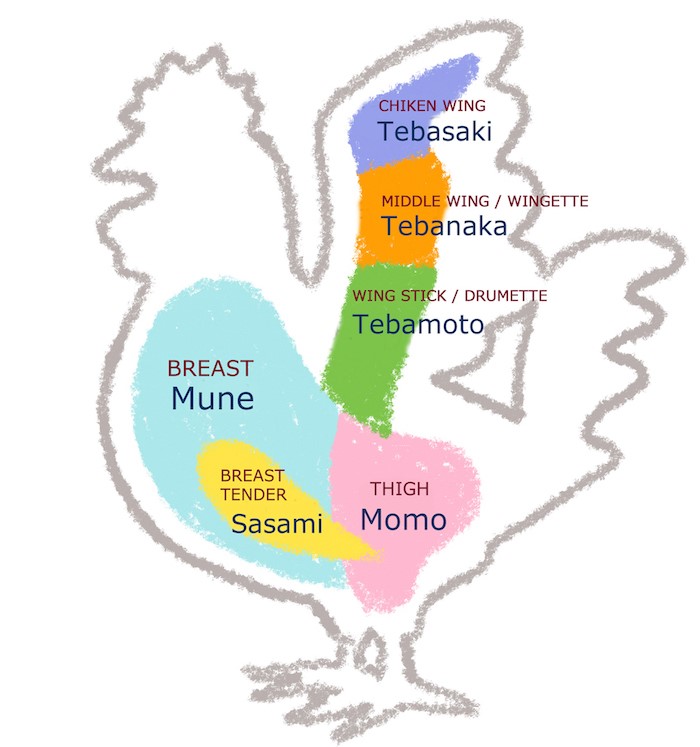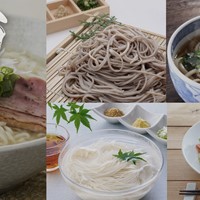50+ Ways to Say Meat in Japanese: Beef, Pork, Chicken & More

With many Japanese foods achieving worldwide popularity, it is common to want to delve deeper into the cuisine and flavors that can be found in Japan. To help you on your culinary adventure, we’ve put together a list of the most common Japanese vocabulary for meat.
If you would like to cook Japanese food, but do not know where to start, please check "Free English Websites for Japanese Food Recipes". To get the most out of shopping at a supermarket in Japan, please read this article. Here is a list of international supermarkets in Tokyo.

How to Say Meat in Japanese
Whether dining at a restaurant in Japan, shopping at a Japanese supermarket, or trying out a new Japanese recipe, you are likely to come across a variety of meat-related ingredients. Below is the most common vocabulary for different types of meat along with their pronunciations.
General Meat Vocabulary
| Vocabulary | Japanese | Pronunciation |
| Meat | 肉 | niku |
| Beef | 牛肉 | gyuniku |
| Chicken | 鶏肉 | toriniku |
| Pork | 豚肉 | butaniku |
| Veal | 子牛 | koushi |
| Duck | アヒル | ahiru |
| Lamb | 子羊 | kohitsuji |
| Foie gras | フォアグラ | foagura |
| Rabbit | ウサギ | usagi |
| Turkey | 七面鳥 | shichimencho |
| Venison | 鹿 | shika |
| Squab | ひな鳥 | hinadori |
Beef Vocabulary

| Vocabulary | Japanese | Pronunciation |
| Top round, cap off steak | うちもも(内もも/内腿) | uchimomo |
| Beef clod / shoulder clod | うで(腕) | ude |
| Flat iron steak | 肩肉 | kata niku |
| Brisket | 肩バラ | kata bara |
| Chuck roll | 肩ロース | kata rosu |
| Chuck flap | ザブトン | zabuton |
| Chuck rib | 三角バラ | sankaku bara |
| Tongue | 牛タン | gyutan |
| Sirloin | サーロイン | saroin |
| Short loin | ショートローイン | shoto roin |
| Boneless short rib | 上カルビ | jo karubi |
| Shank | すね肉 | sune niku |
| Bottom round | 外もも肉 | sotomomo niku |
| Chuck tail flap | タチバラ | tachibara |
| Tail | テール | teru |
| Chuck tender | トウガラシ | tougarashi |
| Short plate | トモバラ | tomobara |
| Tenderloin | ヒレ | hire |
| Flank steak | フランク | furanku |
| Cheek | ほほ肉 | hohoniku |
| Bonep-in strip loin | 骨付きサーロイン | honetsuki saroin |
| Bone-in ribeye | 骨付きリブアイ | honetsuki ribuai |
| Round | もも肉 | momoniku |
| Top blade | ミスジ | misuji |
| Spencer roll | リブロース | riburosu |
| Lip-on ribeye roll | リブロースカブリなし | riburosu kaburi nashi |
| Lifter meat | リブロースカブリ | riburosu kaburi |
| Rib finger meat | 肋間筋 | rokkankin |
Chicken Vocabulary

| Vocabulary | Japanese | Pronunciation |
| Breast | 鶏肉 | mune niku |
| Breast tender / tender | ささみ | sasami |
| Drumstick | 骨付きすね肉 | honetsuki sune niku |
| Gizzard | 砂肝 | sunagimo |
| Thigh | もも肉 | koushi |
| Wing | 手羽先 | tebasaki |
Pork Vocabulary

| Vocabulary | Japanese | Pronunciation |
| Pork belly | バラ肉 | bara niku |
| Back rib | バックリブ | bakku ribu |
| Bone-in loin | 骨付きロース | honetsuki rosu |
| Ham | もも肉 | momo niku |
| Loin | ロース | rosu |
| Jowls | 豚トロ | tontoro |
| Picnic shoulder | ピクニック・ウデ | pikunikku ude |
| Spare rib | スペアリブ | supea ribu |
| Tenderloin | ヒレ | hire |
Supermarket Meat Labels
While many of the words above are used on meat labels to explain the cut of meat, there are some additional words you may come across.
Free Range Chicken
When shopping for chicken, you may want to look for free range, or jidori (地鶏) chicken as opposed to broiler chicken (which isn’t labeled). These are the two main options at most supermarkets.
Domestically Produced Meat
If you are concerned about the origin of your meat, you might also want to check if it is domestic or imported. Domestically produced meat will be labeled 国産 (kokusan) while imported meat will be labeled 輸入 (yunyu). If the meat is imported, the country of origin will also be listed. The most common countries that Japan imports meat from are:
・Australia (オーストラリア)
・United States (アメリカ)
・Canada (カナダ)
・Brazil (ブラジル)
Ground Meat
Ground meat can be readily found in Japanese supermarkets and is used for a wide range of dishes. This can include anything from Japanese hamburg steak, to gyoza and curry. The various types of ground meat are labeled as follows.
| Vocabulary | Japanese | Pronunciation |
| Ground beef | 牛ひき肉 | gyu hiki niku |
| Ground pork | 豚ひき肉 | buta hiki niku |
| Mixed ground beef and pork | 合いびき肉 | aibiki niku |
| Ground chicken | 鶏ひき肉 | tori hiki niku |
Horumon
Another common, yet often overlooked part of food culture in Japan, is horumon, which refers to organ meat and other offal meats. It sometimes goes by the name “motsu” as well.
Historically, horumon was eaten at times when meat was scarce and it was considered wasteful to throw away parts of the animal. However, it has developed into a standalone cuisine and is often celebrated in Japanese culture as being rich in nutrients and good for energy and stamina.
One of the most common types of horumon is liver (レバー or “leba”), which shouldn’t be too foreign to Western palates. However, esophagus, beef heart, diaphragm, and pancreas may be considered a little more adventurous.
Common Ways to Eat Horumon

One of the most common ways to eat horumon is by barbequing it, also known as yakiniku. Cooked over a small grill, horumon develops a unique and delicious flavor. The different types of horumon are often cheaper cuts of meat and so are a great way to experience yakiniku on a budget, or to mix in with more expensive cuts of meat. Yakiniku often comes with dipping sauces and vegetables to grill in accompaniment with the meat to make it a well-rounded and varied meal.
Another common way to eat horumon, along with other meats is through yakitori. Yakitori, or grilled skewers, is a popular style of food which can be enjoyed as a street food, in restaurants, or at festivals. Yakitori usually centers around chicken meat, but often includes chicken offal as options. It can be grilled with a simple salt seasoning or marinated with various sauces, and is a great way to experience horumon in a comfortable setting with a familiar style of food.
For something a bit different, there is also motsunabe. Motsunabe differs from yakiniku and yakitori in that it isn’t grilled meat, rather, it is more similar to a stew or hotpot. This dish comes from Fukuoka prefecture and consists of stewed meat, tofu, and sometimes vegetables in miso- or soy-based soup. It’s considered a very healthy dish as it is generally low in calories and high in protein, with the nutrient-rich horumon included. However, it isn’t just a “diet food,” as it is also hearty and great in winter.
Explore More about Japanese Food and Etiquette
Japan is home to a wide variety of top-quality cuisine and many of the most popular dishes include meat as a key ingredient. When exploring Japanese food, knowing the role of meat, as well as the different cuts and types used, can be very useful in further understanding Japan’s culinary culture. The vocabulary and tips above should help you on your journey to not only order different meat-based dishes, but also buy it at your local Japanese supermarket.
For more information about food in Japan, check out our comprehensive guides that cover everything from traditional ingredients like rice, and natto, to dietary restrictions (gluten free, food additives, and food allergies), nutrition labels, the best BBQ spots in Tokyo, and more!
















